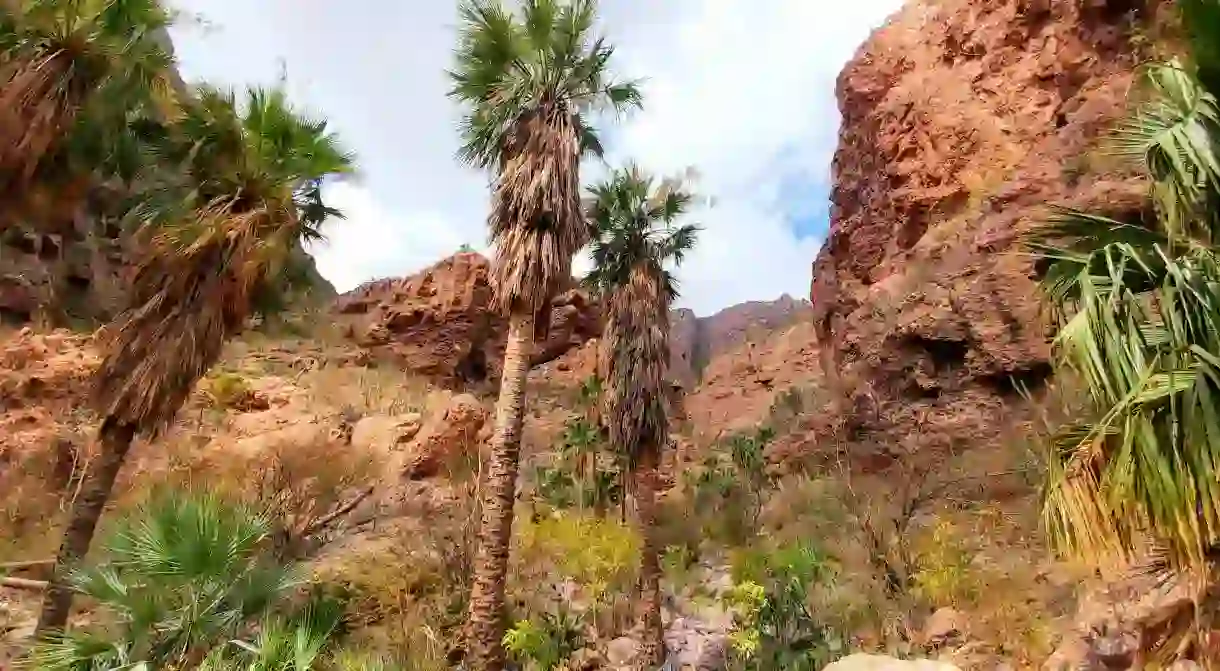10 Things You Can Only See and Do in Sonora, Mexico

Despite being Mexico’s second-biggest state after neighboring Chihuahua, Sonora has avoided mass tourism to largely remain the secret of Arizonian and Mexican travelers. Spanning 70,000sqmi (180,000sqkm), activities here range from whale-watching and canyon hiking to exploring intact colonial towns, including two state-protected “pueblos mágicos.”
Hit the beach at Puerto Peñasco
Architectural Landmark

Puerto Peñasco, aka Rocky Point, is the best-known destination in Sonora – in fact, it’s so popular among landlocked US-border-state citizens that it’s colloquially known as Arizona Beach. And who can blame them for flocking here, with crystalline water that’s perfect for paddle-boarding, boat trips out to snorkel with sea lions, massages on the beach and fabulous bars such as Wrecked At The Reef.
See the landmarks of Hermosillo
Architectural Landmark
The beach isn’t the only place where you’ll find a buzz. Head inland to Sonora’s capital Hermosillo, a lively city with colonial-era landmarks such as La Catedral, a white, early 20th-century structure built in a Neoclassical and Neo-Gothic design. This is also a city of artists: look out for murals of Frida Kahlo and Mexican wrestlers in the streets, see Sonoran art at the 54,000sqft (5,000sqm) Sonora Museum of Art (MUSAS) or check out the indigenous shows at Casa Hoeffer.
Get tickets to the Tecate Sonoro music festival
Park, Music Venue

The relatively new music festival of Tecate Sonoro has quickly gained traction – the last headline act was the iconic Scottish indie band, Franz Ferdinand. Over the two days in November, you’ll also see plenty of Mexican talent taking to the stage, particularly in the genre of Latin pop. So if you want to get au fait with the local musicians, this is the place to do it.
Visit El Pinacate y Gran Desierto de Altar Biosphere Reserve
Park, Natural Feature
Venture into the Sonoran desert, to the Unesco-protected El Pinacate Biosphere Reserve. The remarkable landscape features ever-shifting sand dunes, volcanic craters and black and red lava fields. Despite the arid conditions, plant and wildlife biodiversity thrives – look out for the endemic Sonoran pronghorn, nicknamed “the desert ghost,” an antelope-like creature that’s only found in northwest Sonora and southwest Arizona.
Try 'sobaqueras' street food
Restaurant, Mexican

Sonora’s distinctive food scene includes elaborate dogos (hot dogs) giant burros percherónes (burritos) and sobaqueras (paper-thin flour tortillas). The best place to try the latter is Tortillería San Ramón, a stand on a corner in Villa de Seris. Cooked in front of you on a hot comal (a rounded steel dome), each tortilla is folded up and served with up to three stews and refried beans.
Take the kids to La Laguna del Náinari
Natural Feature
The lake of Laguna del Náinari may be a manmade feature, but with a perimeter of 1.2mi (2km), it creates a natural-looking environment right in the middle of Obregón city. On the east side of the lake, you’ll find snack bars selling drinks out of coconuts, as well as a pier stretching 66ft (20m) out over the water. Look down and you might just spot one of the hundreds of terrapins that populate the lake.
Explore the 'magic town' of Álamos
Architectural Landmark
Sonora has two pueblos mágicos – Mexican towns granted special status for cultural, historical, architectural or gastronomic reasons – which are Álamos and Magdalena de Kino. Álamos, in the foothills of the Sierra Madre Occidental, is one of the most intact colonial-era cities you’ll find in northern Mexico. Its cobblestone paths will take you past Spanish-built mansions, a reflection of its historic wealth as the country’s northernmost silver mining town.
Go hiking at Nacapule Canyon
Natural Feature

Lace up your hiking boots and head to the Nacapule Canyon, near San Carlos. While it’s not as major of a destination as Chihuahua’s Copper Canyon, you can still make this a strenuous trek, following the narrow ravine path uphill for an hour until you reach a sweeping view. Scrambling over boulders, across loose ground and through tunnels adds to the sense of adventure, as does passing the giant prickly cacti and drinking from the freshwater springs.
Take in the view at Mirador San Carlos
Natural Feature
A paved platform slightly overhanging a cliff, this spot has been voted as one of the world’s best ocean views. The expanse before you is the twin-peaked Tetakawi, behind the sapphire-blue ocean with wildlife moving in and out of the frame, including pods of dolphins, whale spouts and birds such as roseate spoonbills, pelicans and orioles. There are places to park along the road above the cliff, and a couple of souvenir and drinks stalls, too.
Visit the wildlife of Isla San Jorge
Natural Feature
Eco Fun Adventures sets off from Puerto Peñasco to Isla San Jorge, also known as Bird Island. One of the most wildlife-rich destinations in Northern Mexico, you’ll have the chance to swim with its colony of 3,600 sea lions, spot dolphins leaping beside the boat and look out for whales (including gray, pilot and killer) between January and April. The island’s name comes from its 20 species of migratory birds, such as brown-footed boobies, pelicans and frigates.
Trips and Tours in Mexico
Architectural Landmark

Planning a visit to the beautiful country of Mexico? If you’re keen to see as many of the incredible sites on this list as you can, you’re best off booking a multi-day tour that shows you the very best this country has to offer.













